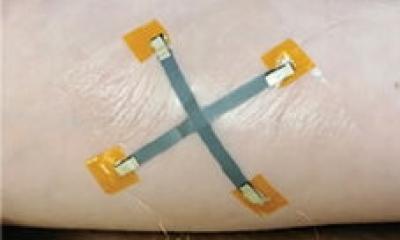Image source: Adobe Stock/Peakstock
News • Experts explore potential of devices
Hearing aids: From necessity to enjoyment through music
Hearing aids aren’t particularly good at preserving the sound quality of music – but some manufacturers do better than others.
For decades, hearing aids have been focused on improving communication by separating speech from background noise. While the technology has made strides in terms of speech, it is still subpar when it comes to music.
In their talk at the 184th Meeting of the Acoustical Society of America in Chicago, “Evaluating the efficacy of music programs in hearing aids,” Emily Sandgren and Joshua Alexander of Purdue University described experiments to determine the best hearing aids for listening to music. “Americans listen to music for more than two hours a day on average, and music can be related to mental and emotional health. But research over the past two decades has shown that hearing aid users are dissatisfied with the sound quality of music when using their hearing aids,” said Sandgren. “People with hearing loss deserve both ease of communication and to maintain quality of life by enjoying sources of entertainment like music.”
Our analyses suggest that brands rated highest in music quality processed the intense ultralow frequency peaks with less distortion than those rated lowest in music quality
Joshua Alexander
In response to this problem, hearing aid manufacturers have designed music programs for their devices. To test and compare each of these programs, Sandgren and Alexander took over 200 recordings of music samples as processed by hearing aids from seven popular manufacturers. They asked study participants to rate the sound quality of these recordings and found that the hearing aids had lower ratings for music than their control stimuli. The researchers found bigger differences in music quality between hearing aid brands than between speech and music programs, with two manufacturers standing out among the rest.
The team is still trying to determine the causes behind these differences. “One contributing factor is how hearing aids adapt to loud, sudden sounds,” said Sandgren. “When you’re listening to a conversation, if a door slams behind you, you don’t want that door slam to be amplified very much. But with music, there are loud sudden sounds that we do want to hear, like percussion instruments.”
Distortion may be one of the biggest problems. Unlike speech, music often has intense low-frequency harmonics. “Our analyses suggest that brands rated highest in music quality processed the intense ultralow frequency peaks with less distortion than those rated lowest in music quality,” said Alexander.
This work will improve future technology and help audiologists select the best current hearing aids for their patients.
Source: Acoustical Society of America
09.05.2023











